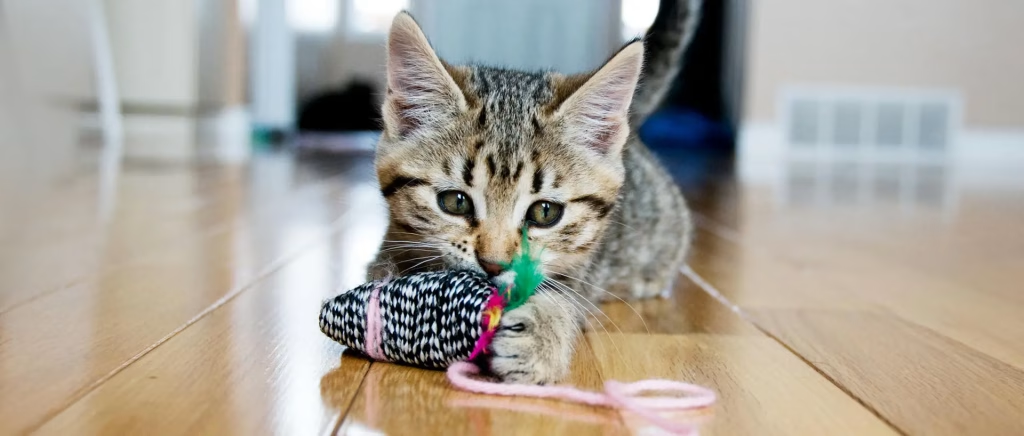Moving is an exciting, chaotic, and exhausting time, and your cat is going through the turmoil right along with you. Thankfully, there are things you can do to calm them during and after the move. Keep reading for some tips on moving with your cat and settling into your new home with ease.
During the Move: Tips for Traveling with Your Cat
Some moves are quick and easy. Others are all encompassing, including weeks of packing, moving trucks, and hours in the plane. Whether you’re moving across town or across the country, doing some prep work ahead of time can make moving houses with a cat smoother for you and your favorite feline.
Tips for Traveling with Your Cat by Car
Preparation is everything when it comes to relocating a cat, and that’s especially true when it comes to moving your cat by car. Making sure you’re equipped with the right tools and attitude will make all the difference. Here are some tips for how to travel with your cat in the car:
- Think about what to bring. Depending on the distance, this might include a carrier, food, treats, a portable litter box, water, and their favorite toys. Keeping your cat comfortable, fed, watered, and entertained will help put them at ease.
- Acclimate your cat to the car if they have never traveled before. Start by letting your cat explore the parked car with the carrier and gradually progress to short trips. Be sure to reward your brave kitty with treats and praise.
- Make sure the carrier is properly secured. Most recommend placing the carrier on the floor behind the front seat, but you can also strap them into the back seat using a seatbelt. Which is best depends on the size of your carrier and vehicle.
- Take breaks when needed. For longer trips, make sure to plan stops for you and your cat to stretch your legs, get some water, and use the bathroom.
- Keep calm. If cats sense stress, they’re more likely to react. Breathe. Take care of yourself.
Tips for Traveling with Your Cat by Plane
Yes, you can travel with your cat on a plane, but it’s important to get some answers from your airline and vet ahead of time so you don’t encounter any hiccups on the big day.
- Get airline approval. Every airline is different. Make sure to confirm policies about flying with pets with your airline of choice and that you’ve taken necessary steps before you get to the terminal.
- Talk to your vet about upcoming travel. They may suggest medication for your cat.
- Carrier train your cat, if needed. Getting cats used to their carriers will help them feel safe during travel. Don’t procrastinate. Depending on your cat’s temperament and previous experience, it can take several days or even weeks to get them comfortable.
- Pack essentials and comfort items. Make sure you have essentials like an airline-approved carrier, food, portable litter box or pee pads, plastic bags, collar/harness/leash, and water bowl, as well as some items like a T-shirt that smells like home or a favorite treat to put your cat at ease on the plane.
- Arrive early to reduce stress on you and your pet. You’ll likely be subject to additional TSA screening, so make sure to allow plenty of time.
After the Move: How to Help Your Cat Settle into Your New Home
Moving to a new house can be bewildering for a cat. Amid all the unboxing and setup, take some time to ensure your new digs are safe and comfortable for your cat.
- Give your new house a safety audit. Before you introduce your cat to a new home, give it a scan for any hazards or potential escape points. Make sure breakables are out of reach.
- Keep doors/windows closed. Moving involves a lot of bustling in and out, and a stressed cat is more prone to bolting outside. Don’t leave doors open or eliminate the possibility altogether by keeping your cat away from any escape routes.
- Set up a designated cat room. Creating a safe space with some familiar and favorite items (e.g., litter box, toys, water) can help calm your cat as they get used to a new territory. This can also help when adopting a kitten. Find more tips for bringing a new kitten home.
- Bring out the cat tree and scratching posts. Setting up familiar items like scratching posts and a cat tree can also go a long way to easing stress and acclimating your cat to their new home.
- Keep your cat’s routine consistent. Cats are creatures of habit. Sticking to the usual routines in terms of feeding times, playtime, or grooming can establish a sense of normalcy that helps ease the transition.
- Keep an eye on your cat and its litter box. A move can upend any pet’s world. In some cases, that stress can lead a cat to stop eating, drinking, and/or using the litter box. Keep tabs on your cat’s behavior and get to the vet if issues persist.
A smooth move with pets is possible. It just takes prep work, some familiar and favorite items, and extra TLC for your furball. Before no time, you and your cat will feel right at home.
Looking for guidance in other stressful situations, such as storms? Check out this article.
